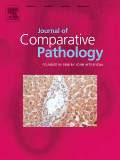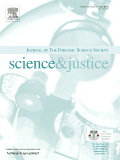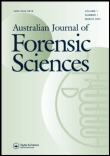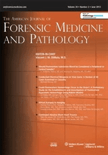
Journal of Forensic and Legal Medicine
Scope & Guideline
Innovating Perspectives in Forensic and Legal Medicine.
Introduction
Aims and Scopes
- Forensic Toxicology:
The journal publishes studies on the analysis of toxic substances in biological specimens, including research on drug-related fatalities, methodologies for toxicological assessments, and novel findings in forensic toxicology. - Forensic Pathology:
Research related to the autopsy process, causes of death, and post-mortem examinations is a core area. This includes case studies, reviews, and advancements in techniques aiding the determination of cause and manner of death. - Sexual Assault and Violence:
A significant focus on the medical and legal aspects of sexual violence, including the collection of evidence, victim support, and legal implications. Studies often address demographic factors, reporting behaviors, and outcomes for victims. - Medical-Legal Issues:
The journal explores various medical-legal issues, such as malpractice, legal responsibilities of healthcare providers, and ethical dilemmas in forensic practice, providing a multidisciplinary perspective. - Technological Advances in Forensics:
Research on the application of new technologies, such as 3D imaging, machine learning, and molecular techniques in forensic science, which enhances the accuracy and efficiency of forensic investigations. - Public Health and Forensic Medicine:
Papers often address the public health implications of forensic findings, including trends in violence, substance abuse, and the impact of socio-economic factors on forensic cases.
Trending and Emerging
- Machine Learning and AI in Forensics:
Recent publications highlight the increasing use of machine learning and artificial intelligence in forensic investigations, such as age prediction and pattern recognition, showcasing the potential for enhanced analytical capabilities. - Mental Health in Forensic Settings:
There is a growing body of research exploring the intersection of mental health and forensic medicine, particularly regarding the implications of mental health conditions in legal contexts and their impact on victimization and perpetration. - Biomarkers and Molecular Techniques:
Research on the use of biomarkers and advanced molecular techniques for post-mortem interval estimation and cause of death determination is gaining traction, reflecting a shift towards more precise scientific approaches in forensic investigations. - Public Health Responses to Forensic Findings:
Emerging studies focus on the implications of forensic findings for public health, particularly in understanding and addressing violence, substance abuse, and the health consequences of forensic cases. - Ethical and Legal Challenges in Forensic Practice:
An increase in discussions around ethical dilemmas and legal challenges faced by forensic practitioners, especially in light of evolving societal norms and legal frameworks, is becoming more pronounced in recent publications.
Declining or Waning
- Traditional Forensic Anthropology:
There has been a noticeable decrease in studies focused solely on traditional forensic anthropology methods, possibly due to the increasing integration of advanced imaging techniques that provide more efficient and less invasive means of analysis. - Historical Forensic Cases:
Research centered on historical case studies, while still relevant, appears to be less frequent as the journal shifts towards contemporary issues and emerging methodologies in forensic science. - Basic Forensic Identification Techniques:
Basic forensic identification techniques, such as fingerprint analysis and simple odontology, seem to be declining in favor of more sophisticated methods involving DNA analysis and digital technologies. - Case Reports without Novel Insights:
There is a decreasing trend in the publication of case reports that do not provide new insights or methodologies, as the journal focuses more on impactful research that advances the field.
Similar Journals

Journal of Intellectual Disabilities and Offending Behaviour
Exploring the Nexus of Mind and BehaviorJournal of Intellectual Disabilities and Offending Behaviour, published by EMERALD GROUP PUBLISHING LTD, serves as a pivotal platform for the exploration of interdisciplinary perspectives surrounding the complex interplay between intellectual disabilities and offending behavior. With an ISSN of 2050-8824 and an E-ISSN of 2050-8832, this journal aims to foster insightful discourse and advance knowledge in critical areas including clinical psychology, psychiatric and mental health studies, and forensic medicine. Ranked in the lower quartiles for 2023 across major categories—most notably Q3 in Pathology and Forensic Medicine—this journal seeks to address urgent research gaps and encourage innovative practices that support affected individuals. Although currently operating under a traditional access model, the importance of its contributions to academia cannot be overstated, particularly as it relates to enhancing our understanding of behaviors stemming from intellectual disabilities. Researchers, professionals, and students alike will find valuable resources and a collaborative environment in which to investigate these vital issues, thereby shaping future investigations and interventions.

Rechtsmedizin
Catalyzing Insights in Forensic ResearchRechtsmedizin is a prestigious academic journal published by Springer, focusing on the critical field of forensic medicine and pathology. With a legacy dating back to 1995, this journal serves as a vital platform for disseminating advanced research and clinical findings that enhance the understanding of legal medicine and forensic science. Although it currently does not offer open access, it boasts an impressive Q3 ranking in 2023 within its category, indicative of its contribution to the field, with a Scopus rank of #149 out of 208 in Medicine, placing it within the 28th percentile of its peers. As a dedicated resource for researchers, professionals, and students, Rechtsmedizin aims to bridge the gap between clinical practice and forensic investigation, promoting the integration of scientific advancements into everyday applications within the legal context. With its location in New York City, USA, the journal remains a key player in the global discourse on forensic issues, thus inviting submissions that push the boundaries of traditional forensic methodologies and explore innovative approaches in legal medicine.

JOURNAL OF COMPARATIVE PATHOLOGY
Connecting Research to Clinical Practice in PathologyJOURNAL OF COMPARATIVE PATHOLOGY, published by Elsevier Science Ltd, stands as a significant publication within the fields of pathology and forensic medicine, as well as veterinary studies. With an ISSN of 0021-9975 and an E-ISSN of 1532-3129, this journal has been disseminating critical research since 1950, contributing to the advancement of knowledge through its focus on comparative pathology. The journal's reputable standing is underscored by its Q3 classification in Pathology and Forensic Medicine and Q2 in Veterinary (miscellaneous) for 2023, reflecting its vital role in shaping contemporary discourse in these domains. The Scopus ranks further solidify its presence, placing it at the 51st percentile in general veterinary sciences and the 32nd percentile in pathology—a testament to the quality and relevance of the contributions it publishes. Although it operates under a subscription model, the journal remains accessible to researchers and practitioners who aim to deepen their understanding of pathological phenomena across species, enhance diagnostic accuracy, and improve clinical practices. With a steadfast commitment to rigorous peer review and a global readership, the JOURNAL OF COMPARATIVE PATHOLOGY is an essential resource for those engaged in research and professional practice, fostering collaborations and innovations that bridge complementary areas of study.

SCIENCE & JUSTICE
Transforming Forensic Practices with Scientific Rigor.Science & Justice is a leading international journal published by Elsevier Science Ltd, dedicated to the interdisciplinary examination of the intersection of justice and science, especially within the realms of forensic science and pathology. Established in 1995, this reputable journal has garnered a commendable Q2 rank in the category of Pathology and Forensic Medicine, reflecting its significant contributions to advancing knowledge in these critical fields. With an ISSN of 1355-0306 and an E-ISSN of 1876-4452, the journal is indexed in Scopus, positioning it in the top 68th percentile among its peers. The objectives of Science & Justice include promoting research that bridges scientific methodologies with justice-related applications, making it an invaluable resource for researchers, professionals, and students alike. As the journal continues to evolve, it aims to interface scientific innovations with forensic practices, thereby enhancing the integrity of justice processes globally. Despite not offering Open Access options, it remains a pivotal reference point within the academic community focused on forensic science methodologies and their legal implications.

INTERNATIONAL JOURNAL OF LEGAL MEDICINE
Uncovering Truths at the Crossroads of Law and MedicineINTERNATIONAL JOURNAL OF LEGAL MEDICINE, published by SPRINGER, stands at the forefront of research in the fields of legal medicine, pathology, and forensic science. With an ISSN of 0937-9827 and an E-ISSN of 1437-1596, this esteemed journal has successfully maintained its reputation as a leading publication since its inception in 1990, providing a platform for the dissemination of cutting-edge research and case studies. The journal is recognized as a Q1 category publication in the 2023 Pathology and Forensic Medicine quartiles, ranking #44 out of 208 in its category on Scopus, reflecting its significant contribution to the academic community—demonstrated by its impressive 79th percentile. While the journal operates under a traditional subscription model, it is committed to enhancing access to critical insights in legal medicine. The INTERNATIONAL JOURNAL OF LEGAL MEDICINE invites researchers, professionals, and students to explore its manuscripts that shed light on the intersection of law and medicine, thus pushing the boundaries of what is known in these vital fields.

AJSP-Reviews and Reports
Empowering Discourse in Diagnostic PracticesAJSP-Reviews and Reports is a peer-reviewed journal dedicated to the advancement of knowledge within the field of pathology and forensic medicine. Published by the renowned Lippincott Williams & Wilkins, this journal plays a vital role in disseminating insightful reviews and reports that contribute to the understanding and application of diagnostic practices and forensic investigations. While currently listed in the fourth quartile (Q4) within its category according to the 2023 metrics, the journal is committed to enhancing its impact and fostering scholarly dialogue among researchers, professionals, and students in the medical community. Despite challenges in Scopus rankings, it provides a platform for significant discourse and innovation in pathology. Operating from the United Kingdom, AJSP-Reviews and Reports is positioned to bridge gaps in knowledge and inspire future research developments. Readers can access valuable findings without open access barriers, allowing for efficient information sharing within the medical field.

Australian Journal of Forensic Sciences
Connecting Researchers to the Heart of Forensic InnovationThe Australian Journal of Forensic Sciences, published by Taylor & Francis Ltd, stands as a pivotal resource in the field of forensic medicine and pathology. With an ISSN of 0045-0618 and an E-ISSN of 1834-562X, this esteemed journal has been at the forefront of forensic research since its inception in 1968. Currently classified in the Q2 category for the year 2023 within its domain, it ranks 92nd out of 208 journals, placing it within the 55th percentile in Scopus rankings. The journal's scope encompasses a diverse range of topics critical to the advancement of forensic sciences, making it an essential platform for researchers, professionals, and students seeking to stay abreast of the latest developments and methodologies in the field. Although not an open-access publication, the journal serves as a crucial conduit for disseminating high-quality research, contributing significantly to the ongoing evolution of forensic practice and knowledge.

AMERICAN JOURNAL OF FORENSIC MEDICINE AND PATHOLOGY
Transforming Insights into Forensic SolutionsThe American Journal of Forensic Medicine and Pathology is a pivotal publication within the field of forensic science and pathology, dedicated to disseminating influential research and advancements in the evaluation of death and injury in legal contexts. Published by Lippincott Williams & Wilkins, this journal, which has been in circulation since 1980, serves as a vital resource for professionals, researchers, and students focused on intersecting disciplines such as medicine and forensic investigations. While it holds a respectable Q3 ranking in both the Medicine (Miscellaneous) and Pathology and Forensic Medicine categories as of 2023, the journal's impact is underscored by its contributions to the ongoing dialogue on forensic practices and methodologies. The American Journal of Forensic Medicine and Pathology provides a platform for innovative papers that shape the future of forensic science, also offering insights through case studies, reviews, and research articles that cater to its diverse readership. With an ISSN of 0195-7910 and E-ISSN 1533-404X, the journal continues to support the scholarly community in advancing knowledge within this critical field.

Forensic Science Medicine and Pathology
Enhancing Forensic Practices through Cutting-edge ResearchForensic Science Medicine and Pathology is an esteemed journal published by HUMANA PRESS INC, focusing on the critical intersections of forensic science, medicine, and pathology. Since its inception in 2005, this journal has provided a vital platform for researchers and practitioners to share innovative studies and findings that enhance our understanding of forensic methodologies and their applications in medical contexts. With an impact factor reflecting its significant contribution to the field, it holds a Q3 ranking in Medicine (miscellaneous) and a commendable Q2 ranking in Pathology and Forensic Medicine as of 2023, indicating its growing influence among scholarly circles. The journal is indexed in Scopus, ranking #76 out of 208 in the Medicine – Pathology and Forensic Medicine category, placing it in the 63rd percentile. Despite it not being an Open Access journal, it remains a crucial resource for professionals, students, and researchers dedicated to forensic sciences and related disciplines. For those seeking cutting-edge research and advancements in forensic methodologies, this journal is an essential addition to any academic repertoire.

Forensic Toxicology
Advancing the Science of Toxicology in Forensic InvestigationsForensic Toxicology is a premier journal published by Springer, renowned for delivering cutting-edge research in the realms of toxicology, biochemistry, and forensic medicine. With an ISSN of 1860-8965 and an E-ISSN of 1860-8973, this journal has established itself as a significant resource for professionals, researchers, and students engaged in the analysis of toxic substances within a forensic context. Its impressive impact factor and ranking reveal its influential presence in the field, particularly as it is categorized in Q1 for Pathology and Forensic Medicine and Q2 for Biochemistry (Medical) and Toxicology. Featured articles span a wide array of topics, facilitating interdisciplinary collaboration and advancing scientific knowledge. While currently not an open-access journal, it remains accessible through institutional subscriptions. With a convergence span from 2006 to 2024, Forensic Toxicology is committed to publishing high-quality research that enhances the understanding of toxicological phenomena and their implications in forensic investigations, reinforcing its role as an indispensable resource in the scientific community.